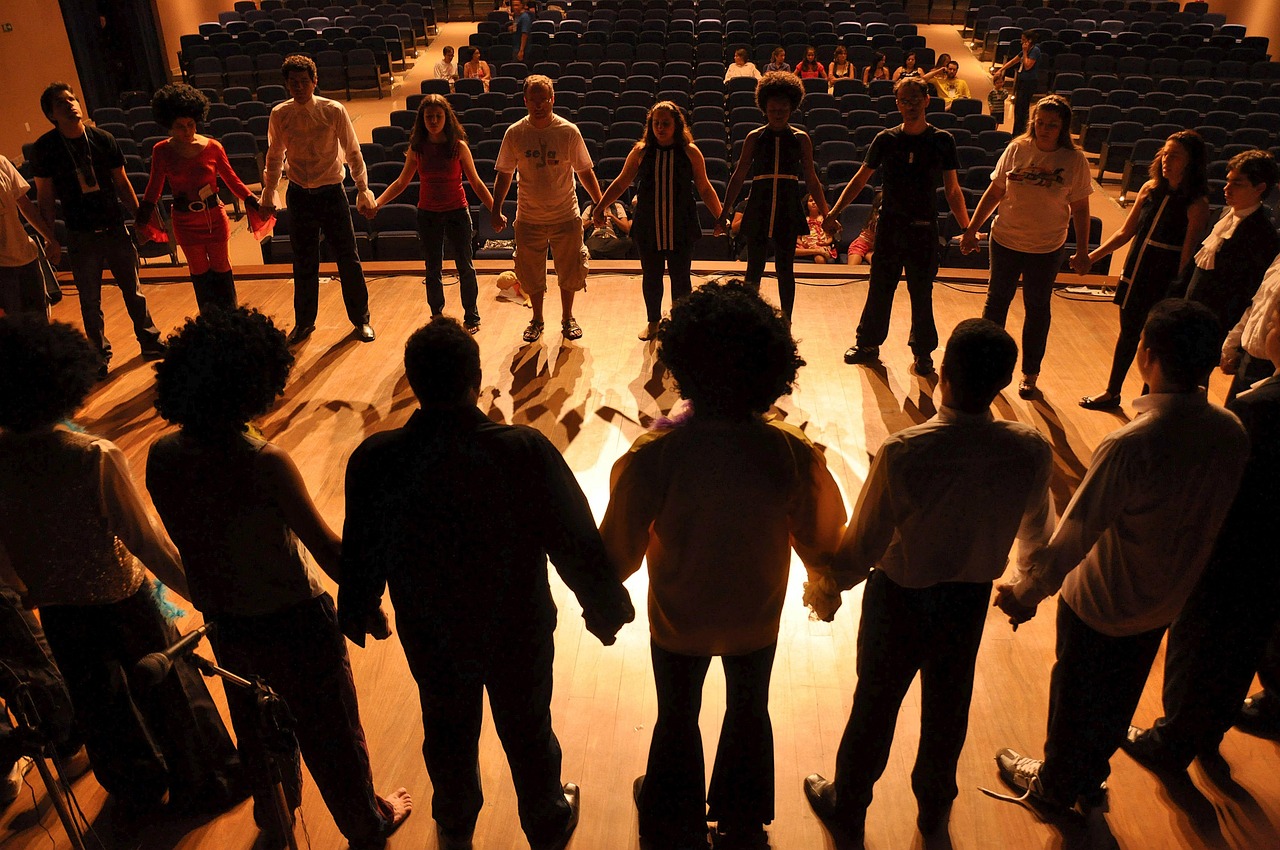Publication of the month Oct 25

October 2025 by Jayne Rowe
This month’s publication of the month (POTM) is a little different than recent editions on two counts: firstly, the majority of featured publications are generally written articles, however this month’s publication is a video essay. Secondly, we tend to write POTM blogs from an objective viewpoint, discussing factual aspects of the publications, but I feel called to include some personal insights and experience in this edition and I will explain why.
The broad subject matter
Dr Grace Thomas, Senior Research Fellow in Arts Engagement, had her video essay “Promoting Care and Caregiving in Live Immersive Performance Installations” published in Theatre Journal earlier this year. In the video, Grace talks about immersive performance installations promoting the concept of care, giving a platform to those who need care and caregivers, as well as encouraging the audience to feel emotionally engaged, all of which is discussed through the lens of an immersive performance installation in 2018 titled “and we are young again…” which focused on dementia and the effect on those living with it.
Care and theatre links
The history of the word ‘care’ and it’s social and psychological meaning throughout the years is briefly touched upon and the quote that Grace references from Human Psychologist Rolo May1 "When we do not care, we lose our being; and care is the way back to being" struck a chord with me, as caring and showing others care is very important to my sense of being. The notion of caregivers is then explored alongside the challenges around defining informal family-based care, a point I identified with, having been a care giver to my nan for a number of years whilst she went through her journey and struggles of living with dementia.
Another quote that jumped out at me was “the notion of being ‘emotionally transported’ regularly occurs in the experiences of both theatregoers and performers” (Hanson 2016)2, as I, like many others, find such pleasure and joy in the arts as a result of the emotional journey that the productions can take you on. I often lose myself in a performance, relishing the escapism and embracing ‘feeling all the feels’, it gives me a sense of being alive and prompts me to consider things from different perspectives, which is really powerful if you think about it. Grace links the neuroscience behind such experiences and how theatre can then be used as “a vehicle for promoting care to an audience”.
Immersive production
The “and we are young again…” production and set up (three actors and two performance areas) are described wonderfully by Grace, highlighting the immersive techniques of sound recordings of verbatim interviews with care workers and dementia patients from a care home, and live performances of sections of Shakespeare’s King Lear, watch the video to find out how audiences interacted with a corridor, store cupboard and a more traditional performance space, each element having been carefully considered and executed.
The poetic meaning behind the production title and the wider socio-economic context in which the production is undertaken, in terms of years of austerity across the UK having impacted the care sector and theatre productions and what that means for audiences, were also detailed.
The journey
We are then taken on a descriptive journey of what the audience experienced:
- The first interaction being a soundscape of interviews with dementia patients and how the nostalgic memories and tales of living with dementia were distorted and disjointed to reflect the struggle dementia patients have with cognitive thinking and memory. This was very compelling to me, having seen a loved one struggle with memory loss, confusion and the challenges that come along with that, over a number of years. What a great way to represent those experiences and connect with the audience.
- Next were sections of Shakespeare’s King Lear performed on a loop by actors in a 2m2 store cupboard that hadn’t been emptied of its clutter! The way in which the audience were encouraged to interact with the performance was imaginative and impactful. Grace talks about the ‘sense of the unexpected’ being used to mirror the uncertainty faced by dementia patients and their families, the unpredictable nature of dementia, the growing sense of isolation as the patient’s journey progresses and why audiences are invited to care about this as the story of Lear and Cordelia is re-contextualised for the modern audience. I was never sure how lucid my nan would be when I visited her in the later stages of dementia, never sure of what emotional state she may be in and never sure if she would want company that day (she would soon let you know if she didn’t, and rightly so). To hear aspects of that intentionally planned into the performance is striking.
- Lastly was the more traditional performance space with chairs, blank Polaroids scattered throughout the space and performances of care worker’s verbatim testimonials. The chairs arranged to allow the audience space to process the content of the performance, the Polaroids a representation of the memories that are so often removed or faded in patients and the testimonials carefully selected to ensure a true representation of the care worker’s experiences in an ethical way whilst negating the most distressing details to avoid traumatising the audiences. A fascinating insight into the considerations surrounding immersive performances.
Closing thoughts
The subject matter, in terms of both dementia and the power of theatre, will be relatable to many. The ‘behind the scenes’ reveal of the thought and planning that goes into engagement, individual experiences, space, pace and autonomy of audience members is really insightful. The considerations around ethical responsibilities and trauma informed planning is thought-provoking.
I thank Grace for sharing this essay in an accessible multimodal format, combining visual, audio, and text and I would encourage others to give it a watch. Keep an eye out for Grace’s current research on accessibility to the arts for disabled people.
Watch the video: